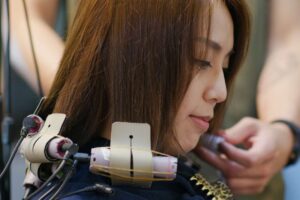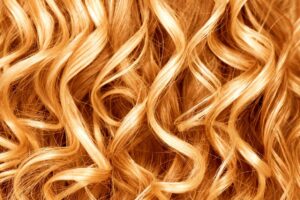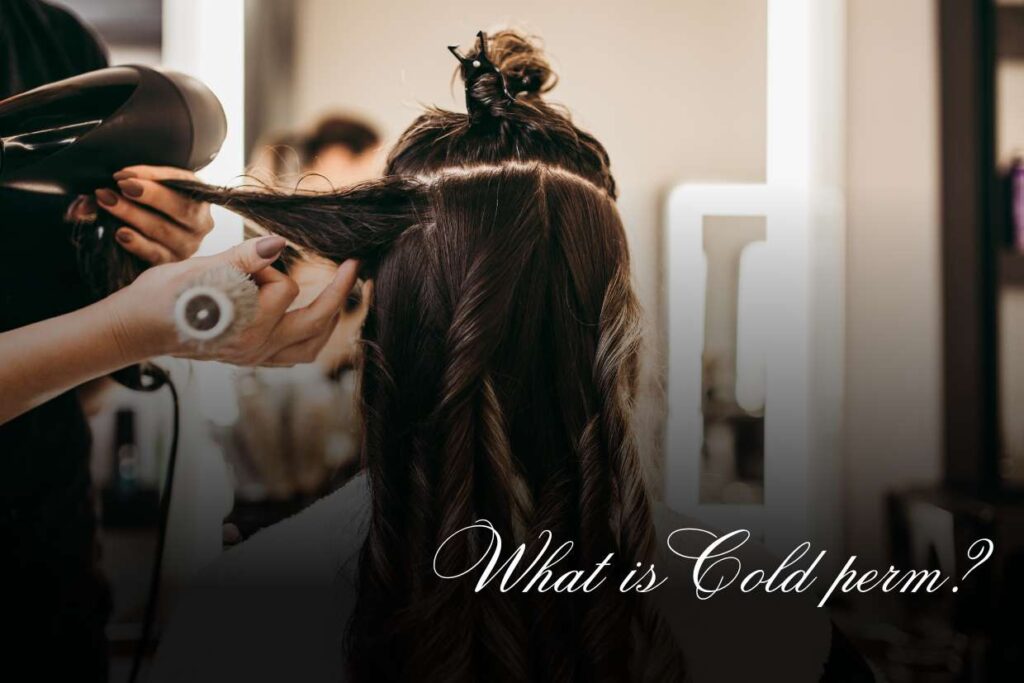Achieving the best of both worlds – beautiful, long-lasting curls as well as heat damage protection – this dream could be a reality. Cold perm hair is a groundbreaking and secure option for those who want to have beautiful curls and great waves that look and feel natural. In this in-depth manual, we will discuss the science, the benefits, the process, and the aftercare of cold perm hair. Thus, you will be able to decide whether this hair treatment will suit you.
If you want to avoid heat damage to your hair, you can use a curling iron and have bouncy, wavy curls. Cold perm hair will be a great choice. In contrast, a cold perm does not use high temperatures but instead uses a chemical process that restructures the hair safely and effectively to keep its natural wet look and the curls last for a long time. These tools are the best for those who want their curls to be defined and voluminous but don’t want to be harmed by heat-based styling.
This article is specifically intended for those curious about cold perm – whether you are a hair enthusiast seeking to expand your knowledge, someone considering a new hairstyle, or even a professional stylist who wants to offer more options to clients. With the aid of understanding the scientific background of cold perms, the numerous advantages they offer, and the precise steps involved in the process, you will be able to choose the best decision for your hair.
Understanding Cold Perm Hair: Science Behind the Style.
A cold perm, also known as a “cold wave,” is a chemical procedure that restyles the hair by breaking it down and rebuilding it into either curls or waves. The procedure commences with applying a solution that causes the disulfide bonds in hair to break down. These strands are the ones that give the hair its natural curliness and strength. When the chemical bonds are broken, the hair is rolled around the rods, which helps form the curl pattern.
A neutralising solution is then used to rebuild the disulfide bonds in their new arrangement, which becomes permanent. See hair as a spring. The flapping solution removes the tension from the spring; thus, remodelling it to fit the desired shape is possible. Finally, the spring is wrapped around a rod to form a curl, and the neutraliser sets it in this shape. This makes the curls long-lasting. The chemical process is not as damaging as the heat-based approach since it does not involve high temperatures that eventually destroy the hair structure.
Reliable Source for Scientific Understanding.

A study in the Journal of Cosmetic Science finds that cold perms utilise alkaline agents such as ammonium thioglycolate that break and reform disulfide bonds in the hair. Although this technique involves chemicals, it would normally be less harsh on the hair than the traditional hot perm, which combines heat with chemicals (Journal of Cosmetic Science, 2019).
Why choose a cold Perm? Unveiling the Benefits.
Revelling in the AdvantagesCold perm hair is a widespread technique with many benefits and is therefore highly demanded among those looking to improve their natural beauty. Here are some key advantages:
Tighter or Looser Curls and Voluminous Hair: Cold perms result in curlier and more defined curls than digital perms. This means that the hair is well-textured and does not fall flat. It can be created in various styles.
Moist Appearance: The chemical process maintains hydration, making the hair appear smooth and healthy.
Minimal Heat Damage: Cold perms do not apply heat, so they are less likely to cause damage and breakage, ensuring that the hair remains strong.
Long-Lasting Results: Cold perms are generally durable, sometimes up to several months, which is suitable for those seeking to minimise the time spent in the salon or at home with their curlers.
Cold Perm vs. Digital Perms.

Several factors are considered when digital perms are compared to cold perms. Curly perms give tighter, more defined curls, while digital perming gives looser, more natural waves. Cold perms do not expose hair to heat; rather, they use chemicals to mould the hair, which causes less damage in general. Digital perms, on the contrary, use chemicals together with heat, and misusing them may result in hair dryness and damage. As for the hair types, cold perms are usually suitable for most of them, including fine or damaged hair, as heat is not applied to them and, therefore, the risk of further damage is reduced.
The digital perm tends to be recommended for thick and coarse hair with the heat and tightness of the wave pattern that can be maintained. Humid perms have a high water absorption, which results in the hair having a wet and shiny look, while digital perms can cause dryness when the hair is subjected to heat due to the process involved. Lastly, cold perms have low maintenance since the result is long-lasting and does not need frequent touch-ups, while digital perms need regular maintenance to keep the waves looking fresh.
Is Cold Perm Hair-Friendly?
The question of whether cold perms have any benefit over other hair care options is quite common. To begin with, cold perms are milder than heat ones since they do not have heat, which can lead to significant harm and weaken the hair structure. While it is true that any chemical process involves some risk of damage, it is important to stress the fact that this is not a universal rule. A visit to a professional hairstylist can significantly reduce the possibility of any harmful damage that chemical treatments could cause and make sure the best results are achieved.
The Cold Perm Process: A Step-by-Step Guide.

A cold perm may be considered a multi-step process aiming to produce the best results. Here’s a detailed breakdown:
Consultation: The process starts with an evaluation, where the hairdresser considers the hair type, condition, and desired curl pattern. This is of great significance when choosing the right rod and waveform.
Strand Test: A small section of hair is dipped in the waving solution and then observed for any side effects to anticipate the final result.
Preparation: The hair is completely washed to remove any dirt or oil that could be a barrier to the perm solution.
Application of Waving Solution: The waving solution is applied to the hair by breaking the disulfide bonds. Next, the hair is wrapped around perm rods in the preferred curl direction.
Processing Time: The hair is left to process for the specified time so the waving solution can penetrate and reorganise the hair into the desired shape.
Rinsing and Neutralizing: The processing time comes to an end, and the waving solution is washed out with the help of the neutralising solution, which re-forms the disulfide bonds in their new shape.
Setting Curls: The hair is gently removed from the rollers, and the new curls are unveiled. Curl-enhancing lotion can be applied to ensure that the curls are set and shine is added.
Visual Guide to the Cold Perm Process.
Image depicting each step of the cold perm process: consulting, strand test, application, processing, rinsing, and curling. It is critical to stress that professional consultation and application should be given top priority. A professional hairstylist can customise the process according to your hair type, allowing you to enjoy the best results.
Maintaining Your Cold Perm: The Essential Aftercare Tips.

Proper aftercare is crucial for keeping hair in good condition and preserving its look after cold perming. Here are some practical tips: Here are some practical tips:
Use Specialised Shampoos and Conditioners: Opt for specially designed permed hair products. The main purpose of these types of formulations is to help maintain the curls and prevent frizz.
Minimise Heat Styling: Stay away from the use of hot tools such as straighteners and dryers, as they can end up spoiling your curls. You may have to use them occasionally, but make sure you apply a heat protectant.
Deep Conditioning Treatments: Regular deep conditioning treatments maintain adequate moisturisation and strength in hair. Search for masks and treatments that provide deep hydration and are loaded with nutrients.
Gentle Detangling: Detangle your hair with a wide-tooth comb, working slowly and gently. Beginning from the end and working your way up is a better option to avoid breakage.
Protective Hairstyles: Try wearing protective hairstyles like braids or buns, which lessen friction and thus prevent hair from breaking while you sleep.
Can You Wash After Cold Perm?
Often asked – Can you wash your hair right away after getting a cold perm?It is suggested that you wait for at least 24 to 48 hours before washing your hair. This waiting period allows the curls to set in properly, and hence, they stay longer.
Amidst all the hair straightening and hair dyeing trends, your cold permed curls stand out as a unique and natural expression of your own individuality. Cold perm hair is a beautiful way of getting long-term natural curls without the damage associated with heat styling. By learning the science behind the process, its benefits, and how to care for your new curls, you will be able to enjoy healthy, voluminous hair with confidence. Your new look will be an expression of your style, and with the help of our professional hairstylists at IVAN, you can achieve that.
We, IVAN, offer cold perms and a variety of hairstyling services at our salon. Our team of professional and experienced hair-care specialists is committed to making your dream hair come true while ensuring that it stays healthy and vibrant. Come to our salon to find out the details of our services and how we can give you the hair you want.


